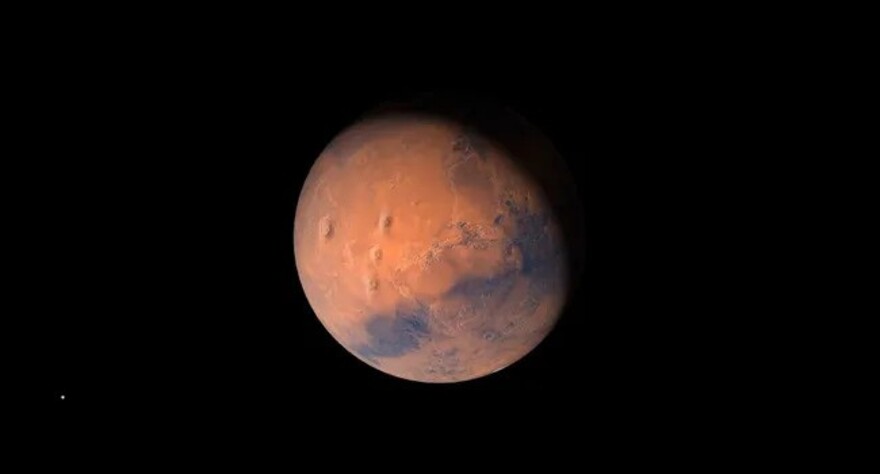When the Rosalind Franklin rover travels to Mars as part of Europe’s ExoMars mission in the future, it will have artificial intelligence on board. Scientists hope that a machine learning algorithm will help them analyze the collected samples and detect organic molecules in them.

New technology to search for life
Scientists turn to machine learning to help with analyzing samples from other planets. The new technology will be applied for the first time to data collected by the Mars Organic Molecule Analyzer (MOMA), a most advanced instrument that puts “a laboratory full of chemical equipment in a package the size of a toaster.”
MOMA will be sent to the Red Planet aboard the Rosalind Franklin rover as part of the upcoming ExoMars mission led by the European Space Agency (ESA). The Mars rover, scheduled to launch no earlier than 2028, will take samples of the surface of Mars to determine whether life ever existed there.
Search for organic molecules
The rover will be able to reach an impressive 6.6 feet (2 m) deep into the surface of Mars; previous rovers have only reached about 2.8 inches (7 cm) below the surface. MOMA has the potential to reveal preserved ancient organics, which would be an important step in the search for past life.
For this purpose, MOMA will look for organic compounds containing one or more carbon atoms covalently bonded to atoms of other elements, most commonly hydrogen, oxygen, or nitrogen, that can be found in samples and originate from living matter.
To search for these molecules, MOMA has the most advanced mass spectrometer ever sent outside our planet. Mass spectrometry is common in laboratories on Earth, offering scientists a fundamental way to identify molecules based on molecular weight. Although there are more sophisticated and accurate methods used by scientists to determine the structure of molecules, the MOMA mass spectrometer is ideal for sorting samples of complex mixtures.
How MOMA works
Like its predecessor, SAM, which was sent on the Curiosity rover, MOMA can prepare samples collected by the rover by volatilizing materials in a high-temperature oven before sending the volatile molecules through a gas chromatograph that separates and analyzes the chemical components of the mixture. Separation occurs through the interaction of samples with two phases in the chromatograph’s column: a mobile gaseous phase and a stationary solid or liquid phase.
While passing through the instrument in the gas phase, depending on their structure, elements, and overall chemical composition, different molecules in the sample mixture will interact differently with the stationary phase of the column: some will linger, forming temporary, weak bonds, while others will just fly through. This causes them to move through the column at different speeds, thus separating the mixture and then identifying the individual components based on their mass and how they ionize.
The interesting thing about MOMA is that it contains an additional mode of operation known as “laser desorption mass spectrometry”. Here, pulsed ultraviolet light is used to release and ionize organic molecules from the sample surface.
Machine learning and molecular analyzers
Although the instruments are impressive on their own, scientists are now training machine learning models that will help them sort the data that MOMA will send home. Laboratory data collected over more than a decade is used for this purpose.
Scientists train the machine learning algorithm by giving it examples of samples that MOMA might find on Mars, identifying what those samples are so that the algorithm can identify them independently in real samples, freeing up the team’s time.
“The long-term dream is a highly autonomous mission,” said Da Poian, the scientist leading the development of the machine learning algorithm. “For now, MOMA’s machine learning algorithm is a tool to help scientists on Earth more easily study these crucial data.”
According to www.space.com


